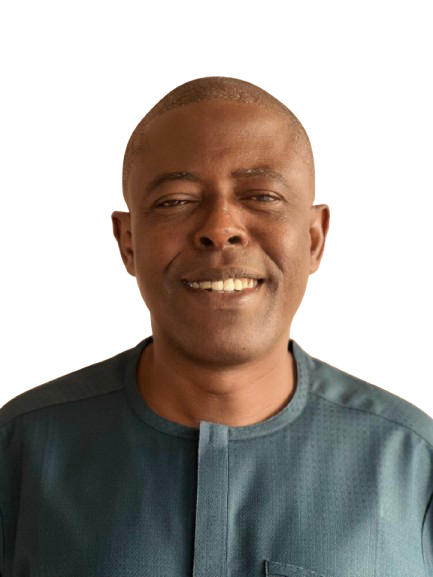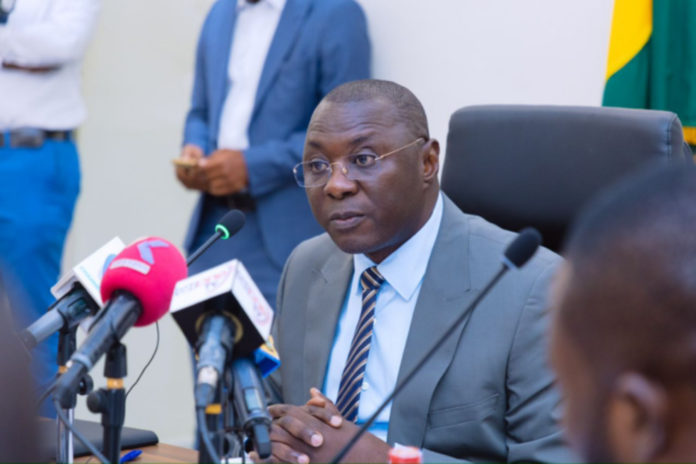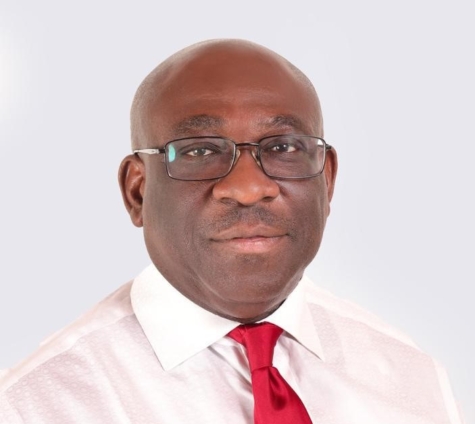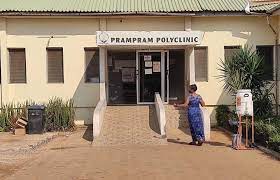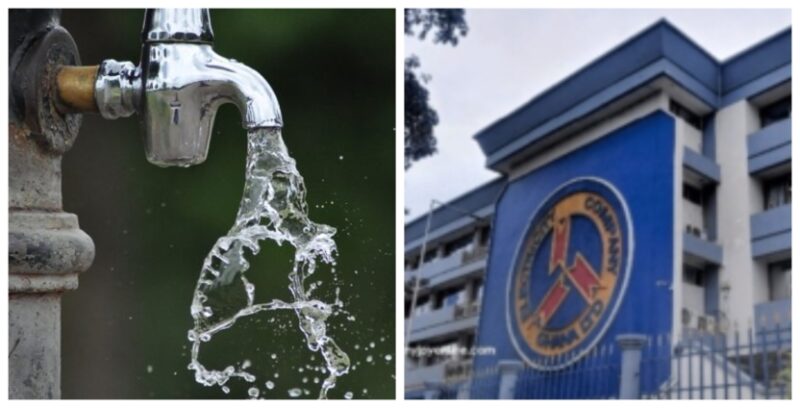Part 7 of this series of articles presents an implementation strategy for local economies across all regions and districts in Ghana developed. This is Outcome 3 of the High-Level Program Design outlined in Part 2[1] of this article series. It draws on specific pledges in the NDC 2024 Manifesto and contemporary data.
The Case for Local Economic Development (LED)
The case for local economic development in all regions and districts of Ghana is driven by three realities.
First, the GSS Labour Statistics for 2023 Quarter 3 indicates that 44% of the almost 12 million persons employed nationally are concentrated in three out of the sixteen regions of Ghana, that is, Greater Accra, Ashanti and Eastern regions.
Second, the GSS Multidimensionally Poverty for 2023 Quarter 4 shows that 14.7 million persons were deprived of electricity, housing, cooking fuel, drinking water, toilet, school attendance, school attainment, health insurance, and nutrition.
The highest concentration of such persons was in Ashanti (2.5 million), Greater Accra (2.3 million) and Eastern (1.4 million) regions.
The intensity of poverty at the national level was 47.2%. At the regional level, it ranged from a low of 41.8% in the Greater Accra region to a high of 51.4% in the North East region.
The incidence of poverty in rural areas was about twice that of urban areas.
Third, the GSS Ghana 2024 Integrated Business Establishment Survey (IBES) says there are about 1.9 million business entities (formal and informal) in the country.
The three top regions, that is, Greater Accra, Ashanti and Eastern regions contributed 48% of the total.
Understandably, metropolitan areas in the 16 regions had a high number of establishments, whilst rural districts had relatively few establishments.
The 10 districts at the bottom with the least number of establishments span across nine regions. They include Adaklu in Volta; Builsa South in Upper East, Mamprugu Moagduri in North East, Birim South in Eastern, North Gonja in Savanah, Banda in Bono, Akrofuom in Ashanti, Daffiama Bussie Issa in Upper West, Akatsi North in Volta, and Sekyere Afram Plains in Ashanti.
The IBES also reveals that the average size of establishments (by number of persons engaged) has declined from 5.3 in 2014 to 3.7 in 2024. The sharpest decline was recorded in the Greater Accra region from 7.2 to 4.1.
The conclusion from the above realities is that there are limited economic opportunities in rural areas. Persons migrate to Accra, Kumasi and the cities in the hope of finding decent jobs but end up in the informal sector to scratch a living.
There are two principal actions to deliver LED in all regions and districts of Ghana.
First, enhance the revenue base of Metropolitan, Municipal and District Assemblies (MMDAs).
The NDC 2024 Manifesto pledged to increase the share of the District Assemblies Common Fund (DACF) of total national revenue from 5% to 7.5% with a fair and equitable disbursement formula; abolish the centralized collection of property rates and hand over to MMDAs; permit MMDAs to issue and manage Municipal Bonds; and promote public-private partnerships (PPPs) at MMDAs for economic projects.
President Mahama’s first budget presented by the Finance Minister to Parliament on 11 March 2025 allocated GHS 7.6 billion to the DACF. This represents a 29% increase over the provisional budget outturn for 2024 of GHS 5.9 billion. However, there is an arrears claim of GHS 3.9 billion on the DACF at the end of 2024 which will be validated by the Ministry of Finance.
The Medium Term Expenditure Framework (MTEF) forecast progressively increases the annual allocation to DACF from GHS 7.6 billion in 2025 to GHS 11.8 billion in 2028. This represents an average annual increase of 14%.
Significantly, the 2025 budget allocates 80% of DACF directly to MMDAs. This sums up to a 88% allocation with the addition of 5% allocated to Persons Living Disabilities (PWDs) and 3% for Member of Parliament (MP) Common Fund.
Previously MMDAs received less than 50% of the DACF with the difference spent in Accra on questionable procurement deals cooked on their behalf.
The 2025 budget also says that the government will explore and operationalize a regulatory framework for the collection, management and reporting of property rates by MMDAs.
Unto whom more is given, more is expected.
Accordingly, MMDCEs and their respective officers, and Assembly men and women must be transparent and accountable to the residents and stakeholders in their respective districts on the utilization of DACF, property rates and all other revenues.
Second, implement the Local Economic Development Policy (2024 – 2029).
The previous NPP administration launched a good and comprehensive Local Economic Development Policy (LEDP) in July 2024.
The goal of the policy is “to promote a conducive environment at the District level for sustained local business growth, decent employment opportunities and economic empowerment for all Ghanaians”
The Ministry of Local Government should hit the ground running with it, implement it, learn lessons, and update it as need be.
LEDP draws lessons from the implementation challenges of the 2020 LED policy.
These are limited understanding of the concept of LED; diverse interests and perspectives of stakeholders; poor leadership, especially at the MMDA level to drive LED initiatives; limited resources to promote LED initiatives; bureaucratic local regulations and processes resulting in slow or stalled LED actions; imperfect nature of public-private partnerships at the local level; weak Inter-Ministerial coordination for policy steering and mainstreaming; and near absence of adequate information management and monitoring.
LEDP is based on the guiding principles of local economic development is not one-size-fits-all; leadership and change management; commitment of relevant stakeholders; Public-Private Partnerships; dialogue between government and business; transparency and accountability; gender equality, equity and inclusiveness; digitalisation; environmental sustainability; informal sector; territorial integration and market.
LEDP has eight (8) policy objectives with accompanying strategies and implementation actions.
- Ensure effective LED multi-stakeholder coordination at all levels
- Strengthen capacities at District Assembly level for effective LED governance
- Improve access to administrative and targeted fiscal incentives
- Facilitate access to information and promote the local area to attract businesses and investors
- Improve access to economic infrastructure to support industrialisation
- Facilitate access to productive assets such as land, water and other natural resources
- Support access to finance for businesses, cooperatives and vulnerable groups; and
- Support access to training and entrepreneurial skills development.
The first two (2) policy objectives and accompanying implementation actions builds the institutions, capacity and the mindset change for LED at national and district level.
The remaining six (6) objectives and accompanying implementation actions supports an enabling environment at the level of each MMDA for entrepreneurship and business growth, job creation and decent work.
Each MMDA should implement LEDP to fit their unique circumstances.
Part 8 of this article series will present an implementation strategy for 24HE Outcome 4, that is,
service times and delivery channels for high in demand public services extended. It will draw on specific pledges in the NDC 2024 Manifesto and contemporary data.
https://www.linkedin.com/in/nicholas-issaka-gbana-98478536
https://web.facebook.com/n.issaka.gbana
@GbanaIssaka
The writer is a Development Economist and Chartered Accountant, Member of the National Democratic Congress, and Executive Member of Eagles Forum, a social democratic organization.
He was a Member of the NDC’s 2024 Manifesto Committee on Jobs and Employment Creation and Lead for the 24-Hour Economy Task Team. He also served on the 2024 Transition Team Social Sector Committee.
[1] https://www.linkedin.com/pulse/implementing-mahamas-24-hour-economy-policy-part-2-issaka-gbana-7nvmf/?trackingId=wSan7k%2B5RTqrioqbI8rq0w%3D%3D


